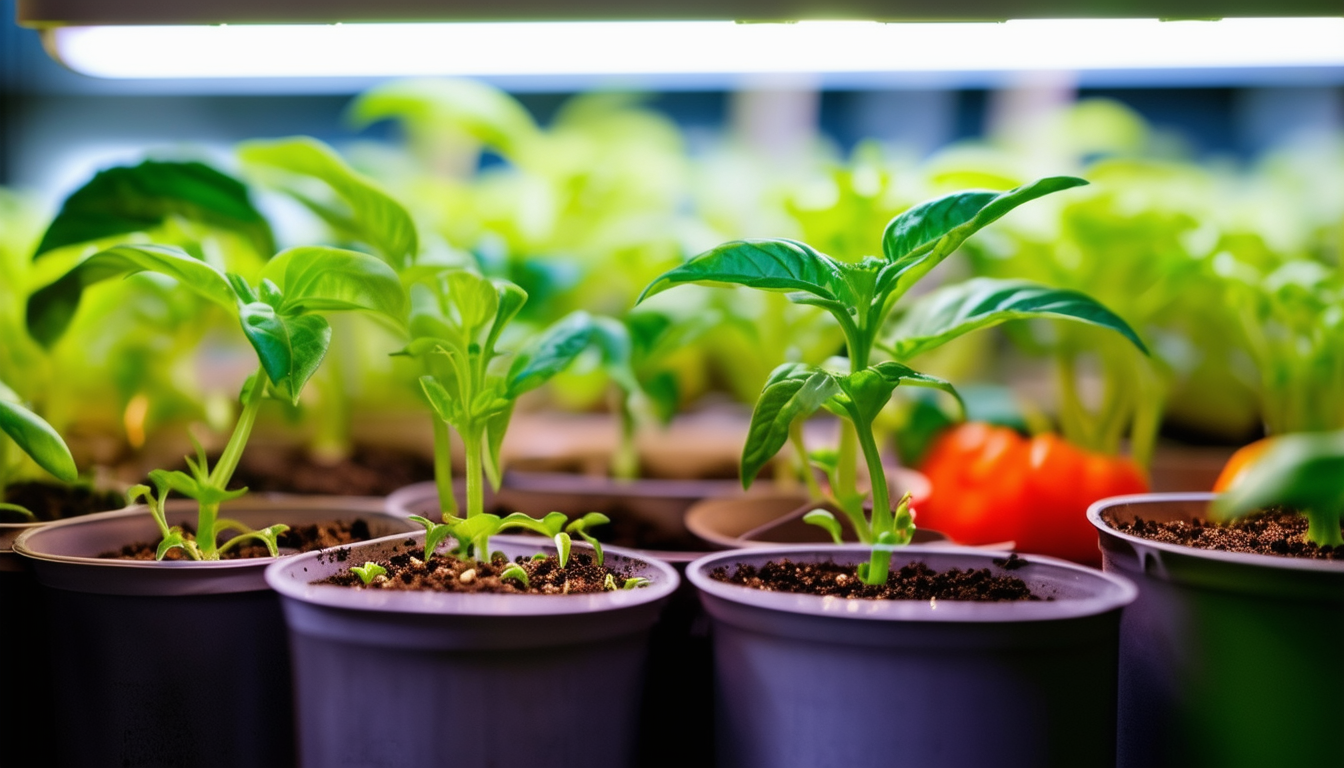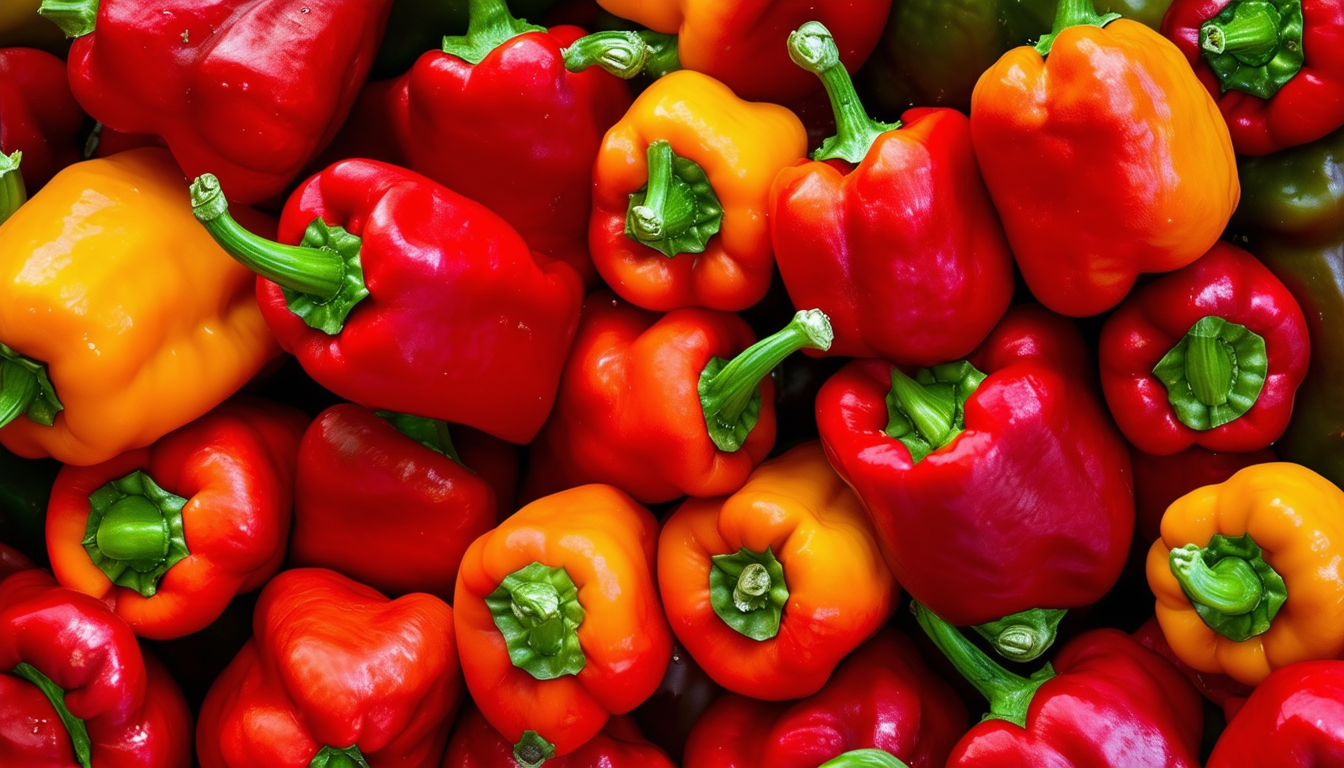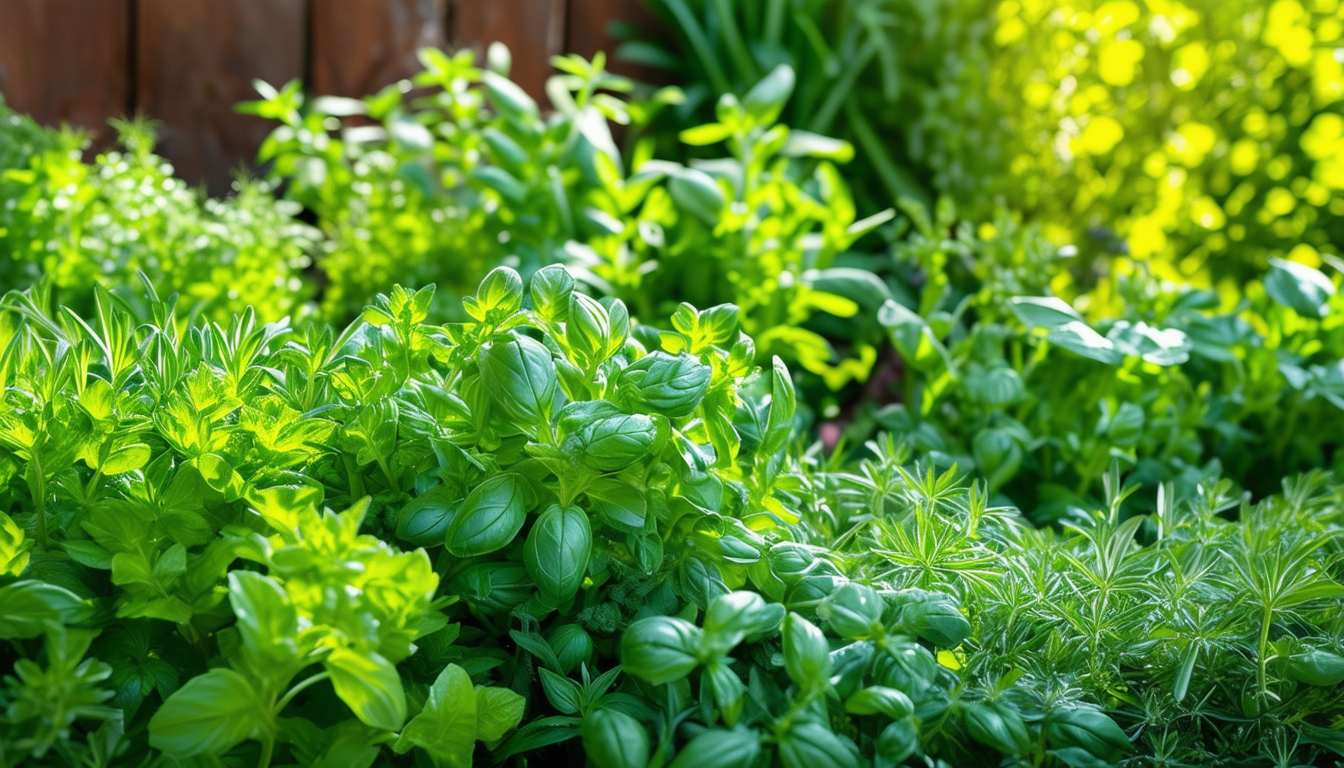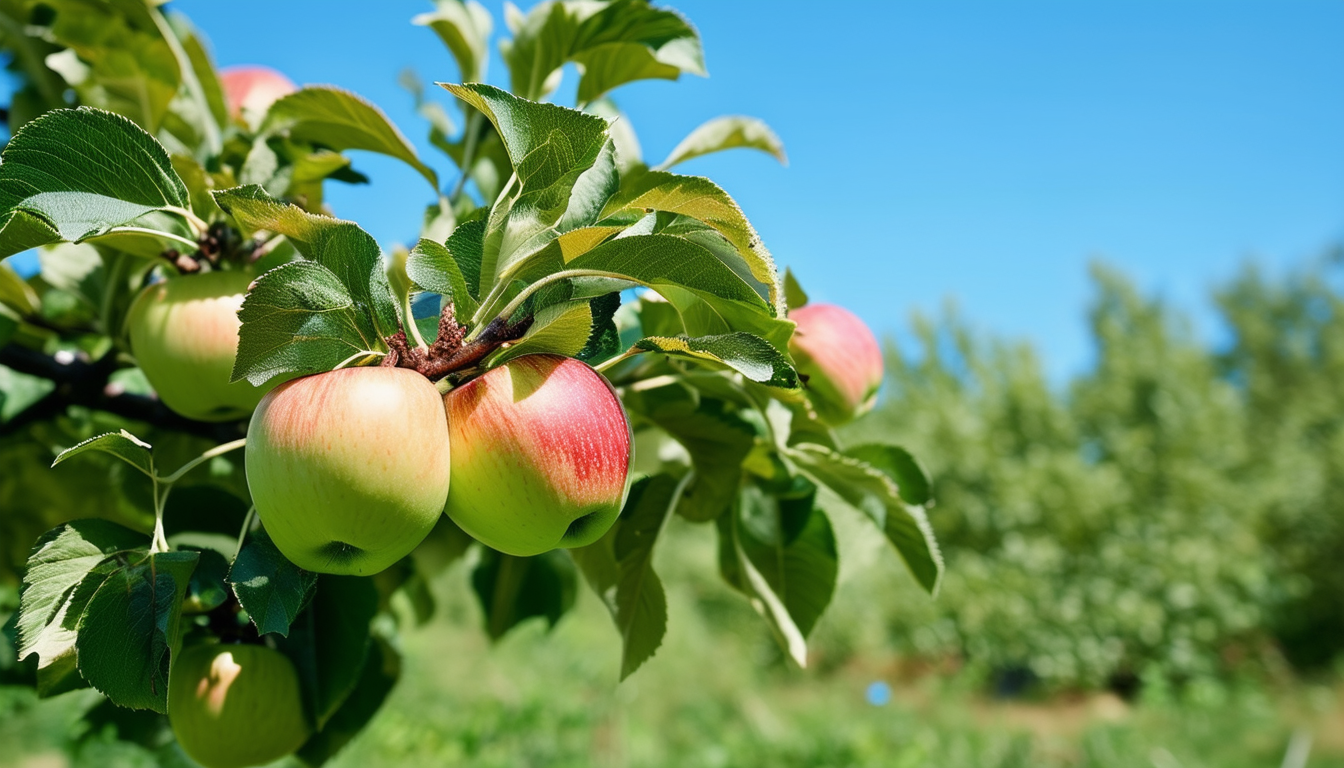
Unlock the secrets to growing vibrant peppers from the comfort of your home with our comprehensive guide to starting pepper seeds indoors.
Intro - Choosing the Right Pepper Seeds for Your Indoor Garden
Growing peppers indoors can be a rewarding experience, providing you with fresh, vibrant produce right from your home. Whether you're cultivating sweet bell peppers or fiery hot varieties, choosing the right seeds is crucial. Opting for quality seeds from trusted suppliers ensures better germination rates and healthier plants.
This guide will benefit you by offering the joy of homegrown peppers, which are often more flavorful and nutritious than store-bought ones. Plus, growing your own peppers can be a fun and therapeutic hobby, adding a splash of greenery to your indoor space.
Some of the best varieties for indoor gardening include 'California Wonder' for sweet peppers and 'Jalapeño' for a bit of heat. These varieties are known for their adaptability and robust yields, making them perfect for beginners.
Tools - Essential Supplies You'll Need to Get Started
Starting pepper seeds indoors requires a few essential supplies to ensure successful germination and growth. A propagator is particularly useful as it maintains the optimal temperature and humidity levels for seed germination. If a propagator is not available, a seed tray with a clear plastic cover can also work well.
You'll also need seed starting mix, which is lighter and drains better than regular potting soil, ensuring that the delicate seedlings are not waterlogged. Additionally, having a spray bottle for gentle watering, labels to keep track of different varieties, and a grow light if natural sunlight is insufficient, will set you up for success.
5 Step Guide to Sowing Pepper Seeds Indoors
1. **Prepare Your Seed Trays:** Fill your seed trays with seed starting mix and moisten it. Ensure the mix is damp but not waterlogged.
2. **Sow the Seeds:** Place 2-3 seeds per cell or small pot, pressing them lightly into the soil. Cover them with a thin layer of soil mix.
3. **Watering:** Use a spray bottle to gently mist the soil, ensuring it remains moist. Be careful not to overwater as this can lead to rot.
4. **Warmth and Light:** Place the seed trays in a propagator or a warm, sunny spot. Pepper seeds need warmth to germinate, ideally between 70-85°F (21-29°C). Use a grow light if natural light is inadequate.
5. **Germination:** Be patient. Pepper seeds can take anywhere from 7 to 21 days to germinate. Keep the soil moist throughout this period, but avoid waterlogging.
Caring for Your Pepper Seedlings: Light, Water, and Temperature Tips
Once your pepper seeds have germinated, proper care is crucial for healthy growth. Seedlings need plenty of light, so place them under a grow light or in a sunny window where they can get at least 14-16 hours of light daily.
Maintain a consistent watering schedule, keeping the soil moist but not soggy. As seedlings grow, ensure they are kept in a warm environment, ideally around 70°F (21°C) during the day and slightly cooler at night.
Additionally, consider gently brushing the tops of the seedlings with your hand or a fan to simulate wind. This helps to strengthen their stems and prepare them for outdoor conditions.
Transplanting Your Pepper Plants Outdoors for Optimal Growth
Transplanting your pepper plants outdoors is a significant step for their continued growth. Begin hardening off your seedlings about a week before transplanting by gradually exposing them to outdoor conditions. Start with an hour a day and slowly increase the time.
Choose a sunny spot in your garden with well-draining soil. Peppers thrive in temperatures between 70-85°F (21-29°C). Dig holes that are slightly larger than the root balls of your seedlings and space the plants 18-24 inches apart. Water them well after planting and keep an eye on them as they adjust to their new environment.
Heigth, Spread & Harvest
Pepper plants can vary in height and spread, but most indoor varieties will grow between 18-36 inches tall and spread about 12-18 inches wide. Regular pruning can help manage their size and encourage bushier growth.
Harvest time depends on the pepper variety, but generally, peppers are ready to be picked 60-90 days after transplanting. Harvest when the peppers have reached their full size and color. For continuous production, pick peppers regularly to encourage new fruit set.
Best Position
Peppers thrive in a sunny position where they can receive at least 6-8 hours of direct sunlight daily. If growing indoors, place them near a south-facing window or use grow lights to provide adequate light.
Ensure the area is sheltered from strong winds and has well-draining soil. If you're growing in containers, use pots with drainage holes to prevent waterlogging.
Best Food & Fertilisers
Feeding your pepper plants with the right nutrients is essential for their growth and fruit production. Use a balanced fertilizer with equal parts nitrogen, phosphorus, and potassium (N-P-K) during the early growth stages.
As the plants begin to flower and set fruit, switch to a fertilizer higher in potassium to promote fruit development. Organic options like compost or fish emulsion can also be beneficial. Avoid over-fertilizing as this can lead to lush foliage with fewer fruits.
Common Pests & Diseases
Pepper plants can be susceptible to pests like aphids, spider mites, and whiteflies. Regularly inspect your plants and use insecticidal soap or neem oil to treat infestations.
Diseases such as bacterial spot, powdery mildew, and root rot can also affect peppers. Ensure good air circulation, avoid overhead watering, and use disease-resistant varieties to minimize these risks.
FAQ
When should I start my pepper seeds indoors?
Starting your pepper seeds indoors is a crucial step to ensure a successful growing season. Ideally, you should begin this process about 8 to 10 weeks before the last expected frost date in your area. This timing allows the seedlings to develop strong roots and healthy foliage before being transplanted outdoors. By starting early, you give your peppers a head start, which can lead to a more bountiful harvest. Keep in mind that different pepper varieties may have slightly different requirements, so it's always a good idea to check the specific needs of the seeds you are planting.
What is the best way to germinate pepper seeds?
Germinating pepper seeds successfully involves creating the right environment for them to sprout. Begin by using a high-quality seed starting mix, which provides the necessary nutrients and drainage. Moisten the mix before planting the seeds, ensuring it's damp but not soggy. Place the seeds about 1/4 inch deep in the soil and cover them lightly. To maintain the ideal temperature for germination, which is between 70-85°F (21-29°C), use a heat mat or place the seed trays in a warm location. Covering the trays with a clear plastic lid or wrap can help retain moisture and warmth. Be patient, as pepper seeds can take 7 to 21 days to germinate.
When to sow pepper seeds in the US?
In the United States, the best time to sow pepper seeds indoors varies depending on your region's climate. Generally, you should start sowing seeds indoors 8 to 10 weeks before the last frost date in your area. For most regions, this means starting seeds in late winter to early spring. For example, in warmer southern states, you might begin in January or February, while in cooler northern states, March or early April might be more appropriate. This timing ensures that your seedlings are ready to be transplanted outdoors once the risk of frost has passed.
How big should pepper seedlings be before transplanting?
Pepper seedlings should be sturdy and have developed a few sets of true leaves before they are ready for transplanting. Typically, this means the seedlings will be about 4 to 6 inches tall. At this stage, the plants should have a well-established root system and be able to withstand the transition to outdoor conditions. It's also important to harden off the seedlings by gradually exposing them to outdoor temperatures and sunlight over a week or two before transplanting them into the garden.
How often should I water pepper seeds?
Watering pepper seeds requires a delicate balance to ensure successful germination and healthy growth. Initially, after sowing the seeds, keep the soil consistently moist but not waterlogged. Using a spray bottle to mist the soil is an effective way to maintain moisture without disturbing the seeds. Once the seeds have germinated and seedlings appear, continue to water them regularly, allowing the top layer of soil to dry slightly between waterings. Overwatering can lead to root rot, so it's crucial to monitor the soil's moisture level carefully.
How long does it take for peppers to grow from seed?
The time it takes for peppers to grow from seed to harvest can vary depending on the variety and growing conditions. Generally, it takes about 60 to 90 days from transplanting the seedlings outdoors to harvesting mature peppers. This timeline includes the initial germination period, which can take 7 to 21 days, followed by several weeks of growth and development. Providing optimal conditions, such as adequate light, warmth, and nutrients, can help ensure a successful and timely harvest.
Why are pepper seeds so hard to germinate?
Pepper seeds can be challenging to germinate due to their specific requirements for warmth and moisture. They need a consistent temperature range of 70-85°F (21-29°C) to sprout, which can be difficult to maintain without a heat mat or warm environment. Additionally, pepper seeds have a hard outer coating that can slow down the germination process. To improve germination rates, some gardeners soak the seeds in warm water for a few hours before planting to soften the seed coat. Ensuring the right conditions and being patient are key to successful germination.
How many pepper seeds per hole?
When sowing pepper seeds, it's common practice to place 2 to 3 seeds per hole or cell. This approach increases the likelihood of successful germination, as not all seeds may sprout. Once the seedlings have emerged and developed their first set of true leaves, you can thin them out by removing the weaker seedlings, leaving the strongest one to continue growing. This method ensures that each plant has enough space and resources to thrive.
Can you germinate store-bought pepper seeds?
Yes, you can germinate seeds from store-bought peppers, but there are a few considerations to keep in mind. First, ensure that the peppers are fully ripe, as immature seeds may not germinate well. Additionally, some store-bought peppers may be hybrids, meaning the seeds may not produce plants identical to the parent. It's also possible that the seeds have been treated to prevent germination. For the best results, it's recommended to use seeds from organic or heirloom peppers, as these are more likely to germinate successfully and produce true-to-type plants.
Why do pepper seedlings take so long to grow?
Pepper seedlings can take a while to grow due to their need for specific conditions, such as warmth and light. Peppers are warm-season plants that thrive in temperatures between 70-85°F (21-29°C). If the environment is too cool, growth can be slow. Additionally, peppers require plenty of light, ideally 14-16 hours a day, to develop strong stems and leaves. Insufficient light can lead to leggy, weak seedlings. Providing the right conditions and being patient will help ensure healthy growth.
Should pepper seedlings be pinched?
Pinching pepper seedlings can encourage bushier growth and more fruit production. Once the seedlings have developed a few sets of true leaves, you can gently pinch off the top set of leaves. This process encourages the plant to produce side shoots, leading to a fuller, more robust plant. However, pinching is not necessary for all pepper varieties, and some gardeners prefer to let their plants grow naturally. It's a matter of personal preference and the specific growth habit of the pepper variety you are cultivating.
How to transplant pepper seedlings into pots?
Transplanting pepper seedlings into pots involves a few careful steps to ensure their continued growth. First, choose a pot that is at least 12 inches in diameter with good drainage. Fill the pot with a high-quality potting mix, leaving enough space for the seedling's root ball. Gently remove the seedling from its current container, being careful not to damage the roots. Place the seedling in the new pot, ensuring the top of the root ball is level with the soil surface. Fill in around the roots with potting mix, firming it gently. Water the plant thoroughly to help it settle into its new home.
Should I soak pepper seeds before planting?
Soaking pepper seeds before planting can help speed up the germination process by softening the seed coat. To do this, place the seeds in a bowl of warm water and let them soak for 4 to 6 hours. This step is optional but can be beneficial, especially for older seeds or those with a particularly hard outer shell. After soaking, plant the seeds as usual in a seed starting mix, ensuring they are kept warm and moist for optimal germination.
Should you bury pepper stems when transplanting?
When transplanting pepper seedlings, it's generally not necessary to bury the stems deeply, unlike with tomato plants. Peppers do not develop roots along their stems as tomatoes do. Instead, plant the seedlings at the same depth they were growing in their original container. This approach helps prevent stem rot and ensures the plant's energy is focused on developing strong roots and foliage. If the seedlings are leggy, you can plant them slightly deeper, but avoid burying too much of the stem.
How to tell if pepper plants are overwatered?
Overwatering pepper plants can lead to several issues, including root rot and poor growth. Signs of overwatering include yellowing leaves, wilting despite wet soil, and a general lack of vigor. The soil may also have a sour smell due to excess moisture. To prevent overwatering, ensure the pots have good drainage and allow the top inch of soil to dry out between waterings. Adjust your watering schedule based on the plant's needs and environmental conditions, such as temperature and humidity.



